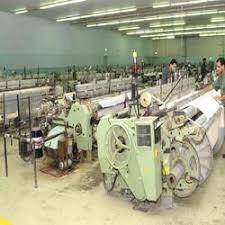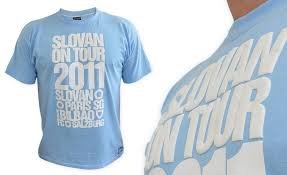

MISCELLANEOUS VALUE ADDITION SERVICES

- Nov 23rd, 2024
Miscellaneous other value addition jobs
Value addition services on fabrics are processes or treatments applied to textiles to enhance their functionality, appearance, or performance. These services can be applied at various stages of fabric production, from raw material processing to finishing. They add aesthetic appeal, improve durability, and often result in higher-quality products that can command a premium price in the market. Below are some common value addition services on fabrics:
1. Printing
- Screen Printing: A process where ink is applied to fabric through a stencil or screen. It’s ideal for large-volume production of solid or multi-color designs.
- Digital Printing: A more advanced method that uses inkjet technology to apply digital images directly onto fabric, allowing for intricate and detailed designs.
- Heat Transfer Printing: Designs are printed on a transfer paper and then heat-pressed onto the fabric, ideal for smaller runs and custom designs.
- Sublimation Printing: Uses heat to transfer dye onto fabric, typically used on polyester and other synthetic fibers. It allows for vibrant and long-lasting designs.
2. Embroidery
- Machine Embroidery: Decorative stitching that adds logos, patterns, or text to the fabric. It’s used to enhance the visual appeal of fabrics, especially for clothing, accessories, or home textiles.
- Hand Embroidery: More labor-intensive and artistic than machine embroidery, it’s used for intricate and high-end design work, typically on luxury fabrics.
3. Dyeing
- Piece Dyeing: The entire fabric is dyed after weaving or knitting. This is the most common method for producing solid colors.
- Yarn Dyeing: The yarns are dyed before being woven or knitted into fabric, allowing for multi-color designs and intricate patterns like checks or stripes.
- Garment Dyeing: Finished garments are dyed, allowing for unique color effects and a worn-in look.
- Tie-Dyeing/Hand Dyeing: Traditional, artistic methods where fabrics are tied or folded before dyeing to create unique patterns.
- Shibori Dyeing: A Japanese method of resist-dyeing, creating distinctive patterns through folding, stitching, or tying the fabric before dyeing.
4. Finishing Treatments
- Softening: Treatments that make fabric feel softer to the touch, enhancing comfort. It can be done through chemical softeners or mechanical methods.
- Waterproofing & Water Repellency: Fabrics are treated with waterproof coatings or agents, such as DWR (Durable Water Repellent), to make them resistant to water penetration.
- Flame Retardant Treatments: A chemical finish is applied to make fabric resistant to catching fire, commonly used in industrial, workwear, and children's clothing.
- Anti-Wrinkle or Anti-Crease Finishing: Fabrics are treated to resist wrinkles and stay smooth after washing and wearing, commonly used in apparel like shirts and suits.
- UV Protection Finishing: A finish applied to fabrics to offer protection from harmful ultraviolet (UV) rays, commonly used in outdoor clothing and accessories.
- Antimicrobial or Antibacterial Treatments: Applied to prevent the growth of bacteria and fungi, often used in medical textiles, sportswear, or activewear.
5. Textured or Structural Treatments
- Pleating: Fabrics are permanently or temporarily pleated to create volume or decorative patterns, often used in fashion and interior textiles.
- Embossing or Debossing: A process that creates a raised (embossed) or recessed (debossed) pattern on the fabric, adding texture and visual interest.
- Crinkling or Crushed Fabrics: Creating an intentional wrinkled or crushed look, often for garments or casual wear.
6. Laser Cutting & Engraving
- Laser Cutting: Uses a laser to cut intricate patterns or shapes in fabrics with precision, often used for creating detailed designs, appliqué, or lace-like effects.
- Laser Engraving: A laser is used to etch designs onto the fabric surface, allowing for unique textures and branding opportunities.
7. Coating and Laminating
- PVC or Polyurethane Coating: A thin layer of plastic is applied to the fabric to make it water-resistant, waterproof, or enhance durability.
- Foil Printing or Coating: A metallic or reflective layer is applied to fabrics, creating a shiny, lustrous finish often used in fashion and costumes.
- Laminate Coating: Two layers of fabric are bonded with a thin film, often to create waterproof, windproof, or insulated fabrics.
8. Specialty Weaves and Knits
- Jacquard Weaving: A complex weaving technique that creates intricate patterns and designs directly into the fabric, often used in upholstery, high-end fashion, or fine textiles.
- 3D Knitting or Weaving: Specialized techniques that produce fabrics with dimensional textures or patterns, used in activewear or fashion.
9. Sustainable or Eco-Friendly Treatments
- Organic Cotton Finishing: Fabric made from organic cotton can undergo specific finishing treatments that maintain its environmentally friendly nature.
- Recycling and Upcycling: Fabrics made from recycled materials, or fabric from reclaimed textiles, can undergo various treatments to improve quality or appearance.
- Bio-based or Natural Dyeing: Using plant-based dyes or environmentally friendly chemicals to dye fabrics, offering a more sustainable option than conventional chemical dyes.
10. Functional Enhancements
- Antistatic Treatments: Applied to fabrics to reduce static buildup, particularly in synthetic textiles, improving comfort and performance.
- Stain-Resistant Finishes: Fabrics are treated with chemicals that make them resistant to stains or easier to clean, commonly used in upholstery or uniforms.
- Odor Control Finishing: Fabrics treated to prevent or eliminate odors, often used in athletic wear and socks.
11. Customization and Personalization
- Heat Pressing or Vinyl Application: Custom designs or logos can be heat-pressed onto fabric using vinyl or other heat-sensitive materials. This is common for sportswear, team uniforms, and promotional items.
- Flocking: A process in which small fibers are applied to the fabric's surface to create a velvet-like texture or pattern.
These value addition services can be combined in various ways to create unique fabrics and garments that appeal to different markets, including high fashion, sportswear, industrial textiles, and home furnishings. The choice of services depends on the desired end use of the fabric and the target consumer.











